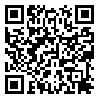Volume 11, Issue 9 (3-2012)
Iranian Journal of Medical Education 2012, 11(9): 1202-1213 |
Back to browse issues page
Download citation:
BibTeX | RIS | EndNote | Medlars | ProCite | Reference Manager | RefWorks
Send citation to:



BibTeX | RIS | EndNote | Medlars | ProCite | Reference Manager | RefWorks
Send citation to:
Yamani N, Shater Jalali M. Curriculum Integration, with Emphasis on Integration in Medical Education. Iranian Journal of Medical Education 2012; 11 (9) :1202-1213
URL: http://ijme.mui.ac.ir/article-1-2052-en.html
URL: http://ijme.mui.ac.ir/article-1-2052-en.html
, m_jalali@toniau.ac.ir
Abstract: (15087 Views)
Introduction: There are increasing advances in science. Medical science must move with this growing trend. Therefore, it is necessary to change the content and setup of medical education curriculum especially basic sciences courses. This study aimed to review literatures about integration in medical curriculum and to present concepts, importance, types and stages of integration in medical science.
Methods: In this review article, Google Scholar, Pub Med, books and journals were search using following key words: curriculum planning, medical education, and integration. Search was limited to published literature during 2000-2011. Fifty articles were obtained through this search strategy. Finally, 31 articles and book reviews were selected and reviewed.
Results: Concepts, importance, types, stages, and effectiveness were extracted from selected literature. Generally, integration means creating a whole or combining separate systems into an integrated system. There are two main types of integration (horizontal and vertical integration) in medical education. Integrated learning through learning environment is more emphasized in clinical courses. Harden offers eleven stages to turn a subject-based education to an integrated curriculum
Conclusion: Integration is an important strategy and complex concept in medical education. The most appropriate step in integration for a medical school depends on some factors such as existing program, teachers' experience and attitude, medical school and the overall goals of curriculum. Integration of basic and clinical sciences based on body organs lead to increased learning. It is necessary to know that matching and arranging information about an organ is not necessarily equal to the integration for learners. Integration by learners and faculty members is different.
Type of Study: Original research article |
Subject:
Curriculum Development
Received: 2012/03/25 | Accepted: 2012/04/4 | Published: 2012/03/15 | ePublished: 2012/03/15
Received: 2012/03/25 | Accepted: 2012/04/4 | Published: 2012/03/15 | ePublished: 2012/03/15
Send email to the article author
| Rights and permissions | |
 |
This work is licensed under a Creative Commons Attribution-NonCommercial 4.0 International License. |




